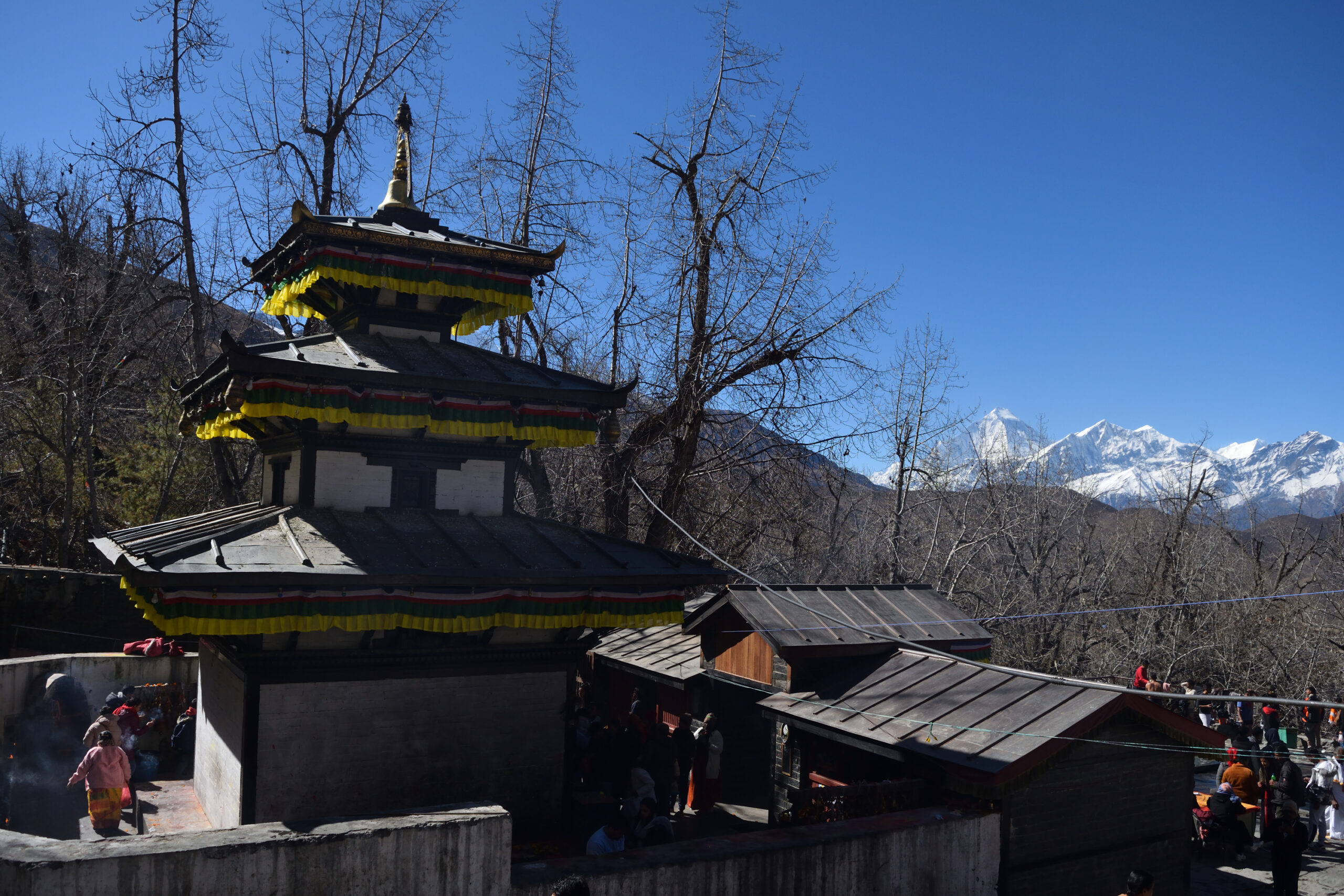Muktinath, a renowned pilgrimage site in Nepal’s Mustang district, has witnessed a surge in visitors recently, particularly during the annual Pitri Paksha (Sohra Shraddha) period. This sacred time for honoring ancestors draws devotees from across Nepal and neighboring India.
Krishnaprasad Subedi, a priest at the Muktinath temple, shared that the number of pilgrims has risen significantly since the onset of Sohra Shraddha. He mentioned, “Devotees from various regions have been increasing since the start of the Pitri Paksha. Many people visit during this period, performing rituals for their ancestors, as it is believed to provide moksha (salvation) for the departed souls and prosperity for future generations.”
A typical pilgrimage involves performing Shraddha rituals at Kagbeni, followed by a visit to Muktinath temple. Pilgrims bathe in the 108 sacred waterspouts around the temple and perform prayers, with the water being collected and taken home as Tirtha Jal (holy water).
Muktinath holds immense religious significance for both Hindus and Buddhists. According to ancient beliefs, Lord Vishnu meditated here, and the water flowing from his perspiration forms the 108 spouts at the temple. The temple, situated at an elevation of 3,710 meters, is regarded as an important religious and tourist destination.
With a growing influx of tourists, local businesses have been expanding infrastructure to accommodate visitors. Hotel entrepreneur Jayesh Gurung explained that the area around Rani Pauwa, the gateway to Muktinath, has seen an increase in modern hotel development. “Currently, there are 32 hotels in the area offering everything from basic to high-end accommodations, ensuring tourists face no difficulties,” he said.
In the past, pilgrims relied on local herders’ shelters or stayed at Rani Pauwa’s Dharamshala, a religious rest house. This would often be overcrowded, with visitors having to bring their bedding and food, according to Uma Devi Bhattarai, a local from Shuklagandaki, Tanahun. However, the rise of modern hotels has eliminated these challenges.
Rani Pauwa is not just a gateway but also a place of historical significance. In 1806, Queen Suvarnaprabha, wife of King Rana Bahadur Shah, visited Muktinath. Upon learning of the pilgrims’ hardships, she ordered the construction of the Dharamshala at Rani Pauwa, using wood from Kushma Armadi. Since then, the place has been known as Rani Pauwa, becoming a haven for pilgrims.
Muktinath is not only a spiritual center but also a cultural and natural attraction for both domestic and international tourists. According to Neeraj Thakali, Vice President of Janapriya Youth Club in Thini Mustang, visitors are drawn to the region’s rich cultural heritage and Himalayan lifestyle.
Thakali highlighted the rise in popularity of homestays in Thini, where tourists can experience traditional Thakali culture up close. The homestays have been particularly full in recent days, allowing visitors to immerse themselves in the local customs. One key attraction is the nearby Snow Leopard Cave, which, along with the Thakali Community Museum, offers a unique glimpse into Mustang’s traditions and wildlife.
Efforts are underway to further develop tourism infrastructure in the area. Thakali shared that the Gandaki Province government has allocated NPR 2 million for this fiscal year to enhance facilities around the Snow Leopard Cave, integrating it into the region’s growing tourism appeal.
He also noted that with the beginning of apple-picking season in early October, tourists visiting Mustang can enjoy and take home locally grown apples as a souvenir.






